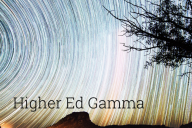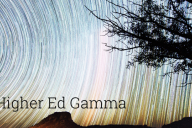You have /5 articles left.
Sign up for a free account or log in.
On Dec. 1, climate protesters twice disrupted a performance of Richard Wagner’s “Tannhäuser” at New York’s Metropolitan Opera house. A newspaper report said, “Demonstrators and booing audience members began to roar at each other across the vast auditorium.”
Public reactions to the protests were fascinating. Some reacted with anger and scorn, calling the demonstrators publicity-seeking Philistines. Here’s one dismissive comment:
“Disrupting a performance to draw attention away from the performers and to steal it away for yourself is not freedom of speech. It is vandalism, no matter how just your cause. The arts, which do provide us with freedom of expression, are what we have left in a fractured, perilous and damaged world. Destroying art will get everyone’s attention. But the message is obscured; the people who are trampling on art to make the world better have just made it a little bit worse.”
Others questioned the protesters’ choice of venue. One response: “It’s odd that so many protesters choose safe venues to protest where most of their audience already identify with their cause.”
A number took the position that the protests accomplish nothing except to fuel a public backlash. As one commenter put it, “What it actually accomplished was giving self-validation to the protesters. Feel better now that you’ve increased awareness?”
There were also those who defended the protests, calling them “noble” and “necessary.” Wrote one commenter: “All [too] easy for people here to be critical of others who are actually trying do something to protest the death of the planet. What are you doing about the future suffering of your grandchildren?”
The past decade has witnessed a surge in public protests that has intensified since the mass demonstrations sparked by the killing of George Floyd. Many of those protests have been staged at cultural institutions. Climate activists threw paint and glued themselves to Goya masterworks in Madrid. Others affixed themselves to Vermeer’s “Girl With the Pearl Earring” in the Hague, a Picasso in Australia, a Botticelli in Italy, a Raphael in Germany and handrails around a dinosaur exhibit in Berlin. Another activist hurled a tomato soup can at a Van Gogh painting in London.
Still other protesters have disrupted traffic in Manhattan, Amsterdam and Brisbane and staged a sit-in in New York City’s Grand Central Terminal.
Alongside rallies, marches, sit-ins, strikes, picket lines and other union actions, another kind of protest has grown more common: what is sometimes termed “performative activism.”
Performative protests aren’t new. In 1914, a Canadian suffragist, Mary Richardson, slashed Diego Velázquez’s “The Toilet of Venus” with a hatchet in part to “condemn the work’s misogynist imagery.”
But the targeting of cultural institutions for protests took a great leap forward with the advent of the “Decolonize the Museum” movement in 2016, when activists staged protests at the Brooklyn Museum to criticize the displacement of Palestinians in Israel and Black communities in New York City and to demand that the museum diversify its collections and staff, return looted artifacts, and purge toxic donors from its Board of Directors.
The best recent book on museum protests, Kirsty Robertson’s 2019 Tear Gas Epiphanies: Protest, Culture, Museums, chronicles a century of protests at Canadian museums, with a special emphasis on the period from 1988 to 2017. The author shows that debates over collection and display policies date back to the early 20th century and that questioning of museums’ elitism, racism, sexism and Eurocentrism has been going on for over six decades.
Museums, the author argues, occupy an “uncomfortable space between capital, the private sector, the arts and the economy,” where the collection, curation, display and interpretation of objects gives tangible expression to a society’s cultural values and which, in the more distant past, largely ignored non-Western artworks and those by women and nonwhite artists.
But, as the author demonstrates, many curators in recent years have openly sympathized with activist critiques about museums’ ethnocentrism and elitism and share the protesters’ view of museums as symbols of economic inequality and instruments of gentrification. When museums display transgressive artworks, stage self-consciously revisionist exhibitions, showcase artworks by previously marginalized or ignored artists and remove works acquired under duress, much of the impetus comes from within.
Something similar is occurring in the rarefied worlds of dance, opera and theater. Patrons, board members, producers, directors and others seek greater inclusivity and diversity and, yes, works that challenge socially accepted standards of behavior, belief, morality or taste.
The Robertson book expresses particular interest in what the author calls “performative politics” and “the commodification of protest.” These terms refer to the characteristics that distinguish recent protests from their predecessors. One characteristic is the use of cultural institutions as stage sets and “safe spaces” for protest. In the age of TikTok and Instagram, these are places where demonstrations over a host of issues, from capitalism and climate change to racial and economic inequality and postcolonial legacies, are met with a high degree of tolerance and, in many instances, support.
As the author observes, in a bid to be considered creative, avant-garde, innovative and socially responsible, these institutions seek to articulate counterhegemonic narratives, advance decolonization, showcase Indigenous and other underrepresented voices, and enact examples of social and environmental justice—at least as far as their funders or legislatures will allow.
The protests, in turn, are highly selective. Whole swaths of social injustice go largely unaddressed, including the mistreatment and suppression of Uyghurs and Kurds and Afghanistan’s women; mass killings in Congo, Sudan, Syria and Yemen; and even the gross underrepresentation of Black students on selective campuses or in high-demand majors. A case can even be made that this selectivity itself serves as a way to dismiss traditional liberalism as wishy-washy and weak-willed and to advance the interests of various internal institutional constituencies.
Does performative politics work? Is this a particularly effective political strategy for bringing about societal, policy or attitudinal change?
In his 2023 study of mass protests across the globe during the past decade, If We Burn, the journalist Vincent Bevins argues that between 2010 to 2020, “more people participated in protests than at any other point in human history.” In Egypt, Turkey, Chile, Hong Kong and Ukraine, these protests toppled governments.
And yet, he insists, most of the protests—“From the so-called Arab Spring to Gezi Park in Turkey, from Ukraine’s Euromaidan to student rebellions in Chile and Hong Kong”—produced “no significant structural change” and often led “to the opposite of what [the protesters] asked for.” Civil war, foreign intervention and authoritarian rule were too often the result.
Why was that the case? To Bevins, the answer is clear: protests in the social media age tend to have no recognizable leader, no authoritative spokesperson and no plan for taking power. Instead, there was a constantly shifting set of demands and no well-defined end state or objective. Eschewing hierarchy and programmatic demands, these movements failed to develop a coherent message, negotiate with government or develop a sustainable political base. Many of the protests—anarchic and nihilistic, reflecting a punk sensibility—surely alienated as many people as they attracted.
In some instances, the protest movements were co-opted; in others, the protests triggered a backlash. Social media made it easier to plan and organize protests and attract protesters, but mass mobilization meant that no organizing committee assumed responsibility for defining a strategy as opposed to a series of short-term tactics.
Protesters failed to do what, in Bevins’s view, successful change requires: forge coalitions, build public support and offer practical, pragmatic, realistic policy solutions. Disdainful of traditional political parties and democratic politics, mass protests created a political vacuum that could be filled by “vanguards” with their own agendas and interests.
In examining environmental protests, David Wallace-Wells, a New York Times journalist, reaches a very different conclusion. In the age of TikTok and Instagram, he argues, relatively small groups of activists have an unprecedented ability to generate widespread publicity, widen the Overton window of acceptable discourse and legitimate previously suspect political viewpoints. In addition, they are often able to mobilize support from those who regard their opponents as illiberal and retrograde.
The mass climate protests that erupted in 2018, which sought to stop the building of petroleum pipelines, gave “focus to the cause and, even when they fail, tend to help identify those responsible for refusing them.” The ultimate goal, he makes clear, wasn’t “about notching narrow policy victories.” It was about seismically reshaping the cultural atmosphere—which, in turn, pressured Democratic politicians to adopt a more aggressive stance on climate issues, culminating in the climate provisions in the Inflation Reduction Act and the Bipartisan Infrastructure Law and various regulatory actions.
My conclusion is that the efficacy of performative activism depends heavily on the political context. Climate activists have a significant ability to pressure Democratic politicians—but no leverage at all over their Republican counterparts. In the world of art museums, artists have great power to pressure directors and museum boards to accommodate their concerns. But in the case of Gaza and Israel, campus leadership is at sea. It’s doing its best to avoid taking any decisive actions—including upholding campus regulations—out of fear of alienating one group of stakeholders or another.
Fearful, flailing and frustrated, senior administrators seem as paralyzed as a deer in the headlights, hoping that the semester’s end will somehow bring the controversies roiling their campuses to an end.



